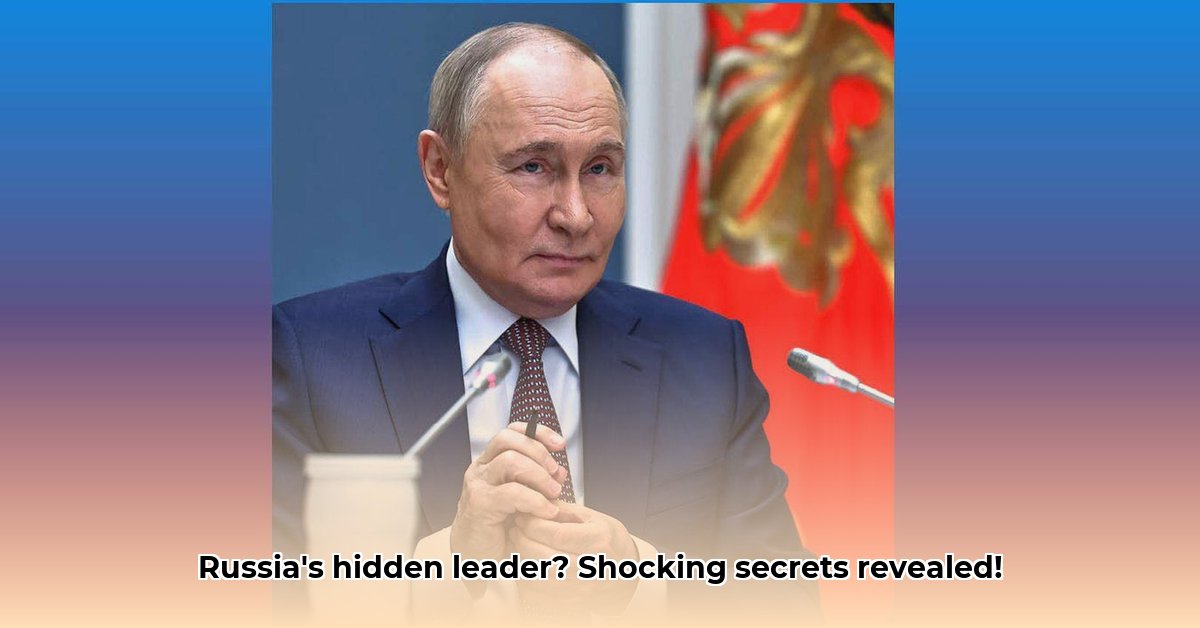
Hij Was Geen Echte Russische President Cryptogram: Cracking the Code of Russian Leadership
The enigmatic "He Wasn't a Real Russian President" cryptogram – Hij Was Geen Echte Russische President – isn't just a clever word puzzle; it's a powerful historical lens. It forces a crucial question: what constitutes a truly legitimate Russian president? This isn't a simple matter of titles and timelines; it delves into the complex power dynamics, political machinations, and the very definition of leadership within the Russian context. For further economic analysis, see this helpful resource. This essay will explore this cryptic puzzle, analysing historical figures and events to uncover a deeper understanding of presidential legitimacy in Russia.
More Than Just a Defining a "Real" President
What truly defines a "real" Russian president? The cryptogram itself suggests there's no single, easy answer. It's a multifaceted issue, encompassing several key elements:
Electoral Integrity: Was the election process fair and transparent, or marred by manipulation and questionable practices? A rigged election severely compromises a president's legitimacy.
Substantive Impact: Did the president's tenure leave a lasting, positive mark on Russia? Did their policies significantly improve the lives of ordinary citizens and shape the nation's trajectory? A president's actions, not just their tenure, define their legacy.
Navigating the Power Game: How effectively did the president manoeuvre the intricate web of Russian power structures? Did they skillfully negotiate alliances, or did their actions lead to instability and internal conflict? Their political acumen is a key factor determining their success.
Popular Mandate: Did the Russian population widely accept the president's leadership, or were they largely unpopular and viewed as illegitimate? A leader's approval rating, while subjective, reflects their standing with the people they govern.
These factors are interwoven, influencing and shaping one another. Separating fact from fiction requires a thorough analysis of the historical context. But how do we weigh these factors against one another? How do we create a metric for presidential “truth”? This requires exploring individual cases.
Unmasking the "Not-So-Real" Presidents: Delving into History
The cryptogram doesn't merely offer a list of names; it presents a historical challenge. Each individual labelled as a "not-real" president deserves individual scrutiny. It's not enough to simply label someone; we must explore the reasons behind that label.
Consider, for example, a leader deemed illegitimate by the cryptogram. That label prompts important questions: Was it due to a lack of popular support? Was there evidence of electoral fraud or covert manipulation? Or perhaps their governance was widely seen as ineffective or even harmful? The answers are embedded within the layers of history, waiting to be revealed. These aren't isolated events; they are interconnected, highlighting the complexities of Russian history.
More Than a Puzzle: The Cryptogram's Deeper Meaning
The Hij Was Geen Echte Russische President cryptogram isn't just an intellectual exercise; it reflects a critical debate surrounding Russian leadership. It challenges us to question established narratives and reassess past presidencies. It acts as a catalyst, prompting deeper investigations into the complexities of Russian history.
Is it possible to objectively label a president as “real” or “not real”? Such a binary approach risks oversimplification. The cryptogram compels a more nuanced understanding—an exploration of the interplay between historical circumstance, political strategies, and subjective interpretations of effective leadership. The "truth" is likely a spectrum, not a definitive binary.
The Ongoing Search for Answers
A complete understanding of this cryptogram requires extensive research. We need in-depth biographies of the figures in question, detailed analyses of their respective elections, and careful assessments of their impact on the lives of ordinary Russians. The puzzle serves as a springboard, leading to further questions, and potentially modifying our understanding of Russian history and its shifting political landscape. The journey to understanding "real" Russian presidents is an ongoing process. It's a quest for historical accuracy, and the conclusions we reach today may well be refined by future research and discoveries.
Defining a "True" Russian President Historically: A Framework for Analysis
The "Hij Was Geen Echte Russische President" cryptogram throws into sharp relief the complexities of defining "true" Russian presidential legitimacy. It prompts us to move beyond simply identifying who held the office and delve into the multifaceted factors which contribute to a president's historical standing.
Three Pivotal Points for Analysis:
- Popular Support: Did the president enjoy substantial and sustained popular support among the Russian people?
- Effective Governance: Did the president's policies lead to tangible improvements in the lives of Russians and advance national interests?
- Historical Impact: Did the president's actions and legacies leave a lasting and significant impact on Russia's political, social, and economic landscape?
These points allow for a more thorough and nuanced evaluation of each president's claim to legitimacy. The “truth” is not an easily definable concept, but rather a product of careful analysis and careful weighing of evidence. The impact of external pressures (international relations and economic sanctions) should also be factored. The “truth” of a presidency may also be clouded by propaganda and carefully managed public image, demanding a deep dive to separate appearance from reality. Ultimately, a spectrum of leadership emerges, with each president’s legacy having its own complexities and contradictions.